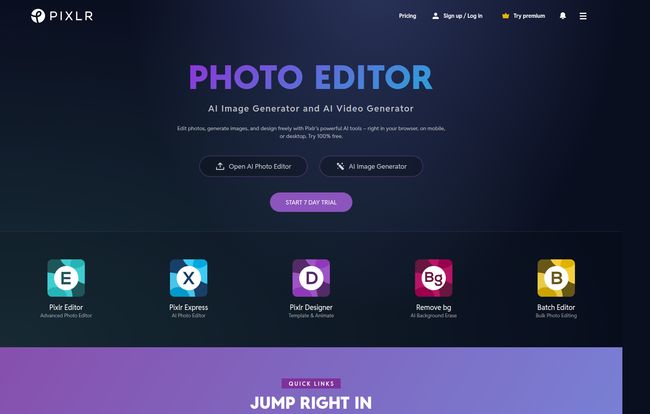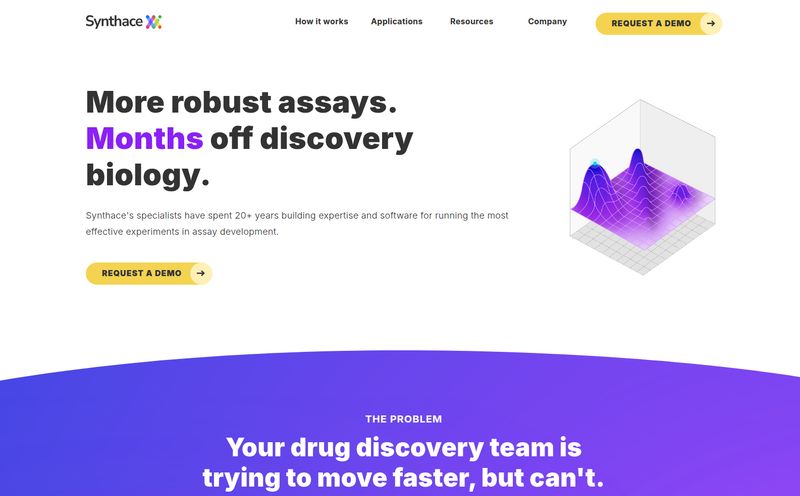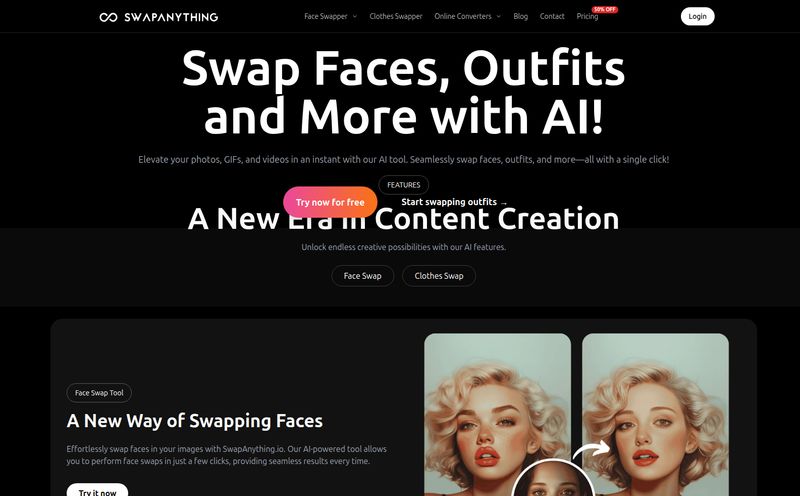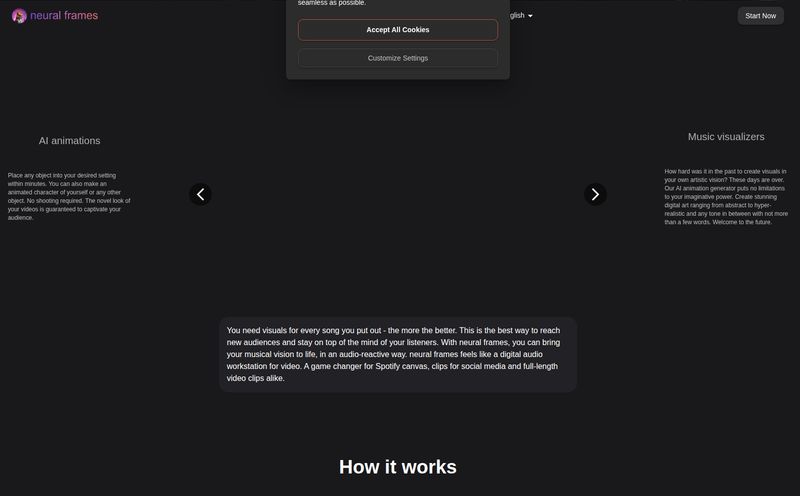I’ve been in the SEO and content world for what feels like a lifetime. And you know the drill. You need to resize an image. Fast. You need to slap some text on a thumbnail, or maybe, just maybe, remove your ex from that one really good vacation photo. Firing up Photoshop for that feels like using a sledgehammer to crack a nut. It's overkill, and honestly, who has the time?
For years, the go-to answer for quick, browser-based editing was Pixlr. It was the scrappy underdog that just worked. But the web has changed. AI is everywhere, Canva has a chokehold on the quick-design market, and I found myself wondering... is Pixlr still relevant? So I dove back in. And folks, what I found was pretty interesting.
First Off, What Even Is Pixlr Anymore?
Let's get one thing straight: this isn't your old-school, one-trick pony photo editor. Pixlr has grown up. It's now a full suite of cloud-based tools. When you land on their site, you're presented with a choice, which can be a little confusing at first. You've got Pixlr E (the 'E' is for 'Editor', think of it as the advanced, more Photoshop-like version) and Pixlr X (the 'X' is for 'Express', your quick and easy, get-it-done-now version).
I spend most of my time in Pixlr E because I like layers and a bit more control, but for slapping a filter on something or making a quick crop, Pixlr X is fantastic. The biggest draw remains the same: it all runs in your browser. No downloads, no installations, no begging the IT department for an admin password. It works on my Mac, my Windows PC, and even has a mobile version for those desperate on-the-go moments. It's kind of become this middle-ground hero, sitting somewhere between the professional brute force of Adobe and the template-driven world of Canva.
The AI Tools That Genuinely Impress
Okay, let's get to the shiny new toys. Every single platform is cramming "AI" into their marketing, but most of it is just smoke and mirrors. Pixlr, however, has integrated some generative AI tools that are legitimately useful, especially for content creators.
Generative Fill: The Magic Wand's Big Brother
You've seen this in Photoshop, right? The ability to select an area and just... tell it what to put there. Pixlr's Generative Fill is surprisingly good. I tested it by taking a product shot and asking it to remove a distracting logo in the background. It wasn't just a smudge; it rebuilt the background texture convincingly. It’s perfect for removing photobombers, getting rid of unwanted objects, or even changing the style of someone's shirt. Is it flawless every time? No. But for the price (often free), it's mind-blowing.
Generative Expand: Fixing Your Terrible Framing
This is my favorite. You have a perfect vertical photo, but your blog's featured image needs to be a wide, 16:9 banner. What do you do? In the past, you'd have to do some creative cropping and maybe add blurry bars to the side. Ugly. With Generative Expand, you just drag the canvas borders outward, and the AI fills in the blanks, extending the scene in a way that looks shockingly natural. It’s saved my bacon on more than one occasion when dealing with awkward source images.

Visit Pixlr
They also have a straight-up AI Image Generator. It’s not going to compete with Midjourney for creating fine art, but for generating a unique background texture, a simple icon, or a conceptual image for a blog post? It’s right there inside your editor. No need to open another tab. The convenience is the real winner here.
Let's Talk Money: Is Pixlr's Pricing Fair?
Ah, the all-important question. Can you get by for free, or do you have to open your wallet? Here's my breakdown.
The Free Tier is genuinely one of the most generous out there. You get access to the core editors (both E and X) and a limited number of AI-generative credits. You'll have to deal with ads and you might not have all the fancy tools, but for a quick edit? It’s more than enough. I used the free version for years.
But if you start using it regularly, the paid plans become very tempting. Here's how I see them:
| Plan | Price (Annual) | Who It's For | Key Features |
|---|---|---|---|
| Plus | $2.49 /month | The Regular User | Ad-Free, Unlimited saves, 80 AI Credits/month |
| Premium | $9.99 /month | The Creator / Small Biz | Everything in Plus, 1000 AI Credits/month, huge asset library, private AI mode |
| Team | $16.99 /month | Small Agencies | 5 Premium seats, 1000 AI credits per seat |
For me, the Premium plan is the sweet spot. The jump to 1,000 AI credits is significant if you use the generative tools a lot, and the expanded library of templates, fonts, and elements is a huge time-saver. That said, the Plus plan is an absolute steal for just getting rid of ads and getting a taste of the AI power.
One major point to mention, and it's a bit of a sour one: their terms state they don't provide refunds once a payment is processed. So, make sure you use the free version or the 7-day free trial to be certain before you commit. It’s a harsh policy, but at least they're up front about it.
My Unfiltered Opinion: The Good, The Bad, and The Quirky
So, after spending a few weeks back in the Pixlr ecosystem, here are my thoughts. No fluff.
The Good: The sheer accessibility is unbeatable. Being able to do 90% of what I'd do in Photoshop, but from any browser, for a fraction of the price (or free), is incredible. The AI tools are not just a gimmick; they are practical problem-solvers. It's a lifesaver for anyone in digital marketing.
The Bad: The AI credit system, while understandable, can feel a bit like an arcade where your tokens run out just as you're getting to the good part. On the free or Plus plan, you have to be strategic with your AI use. Also, the interface, while functional, sometimes lacks teh polish of a more modern app like Figma or even Canva. It's not a dealbreaker, but it's noticeable.
The Quirky: Sometimes, the AI's interpretation of a prompt for Generative Fill can be... hilarious. I once tried to remove a coffee cup from a desk and it replaced it with a small, very confused-looking hamster. It’s a reminder that we're still in the early days of this tech, and sometimes you just have to laugh and try again.
Who Should Use Pixlr (And Who Shouldn't)?
This isn't a tool for everyone, and that's okay.
You should definitely use Pixlr if you're a blogger, social media manager, student, or a small business owner who needs powerful image editing without a steep learning curve or a hefty subscription. If you find Canva too restrictive and Photoshop too complex, Pixlr is your promised land.
You might want to look elsewhere if you're a professional photographer who needs to edit RAW files or requires precise color management for printing (CMYK). Or, if you're part of a large design team that needs the robust collaboration and vector-based features of a tool like Figma. Pixlr knows its lane, and it stays in it beautifully.
The Final Verdict
So, is Pixlr still the king? In the realm of free, browser-based photo editing that packs a serious punch, I'd say yes. It has successfully evolved from a simple editor into a potent design tool with AI features that actually work. It’s carved out a perfect space for itself in a crowded market.
It’s the tool I recommend to colleagues who don’t have an Adobe license and to friends who just want to make their social media posts look better. It’s democratic, powerful enough, and continues to get better. For that, it keeps its crown in my book.
Frequently Asked Questions about Pixlr
- Is Pixlr really free to use?
- Yes, Pixlr offers a very capable free version. It's supported by ads and has some limitations on tools, saves, and AI credits, but it's perfect for casual editing.
- Can Pixlr completely replace Photoshop?
- For many users, like bloggers and social media managers, yes. For professional photographers or graphic designers who need advanced features like RAW editing, complex vector work, or print-ready CMYK files, Photoshop is still the industry standard.
- How do the AI credits in Pixlr work?
- You use one credit each time you use an AI-powered tool, like Generative Fill or creating an image. Free users get a few, while paid plans like Plus and Premium offer 80 and 1,000 credits per month, respectively.
- Does Pixlr work on mobile devices?
- Yes, Pixlr has mobile apps for both iOS and Android, allowing you to edit photos on the go. The browser version also works on most modern mobile browsers.
- What is Pixlr's refund policy?
- Pixlr has a strict no-refund policy. Once a payment for a subscription is processed, they do not offer refunds. It's recommended to use the free trial to ensure it meets your needs before purchasing.
- What's the difference between Pixlr E and Pixlr X?
- Pixlr E (Editor) is the advanced editor with layers, more tools, and a layout similar to Photoshop. Pixlr X (Express) is a simplified editor designed for quick and easy edits, like adding filters, text, or making simple adjustments.



